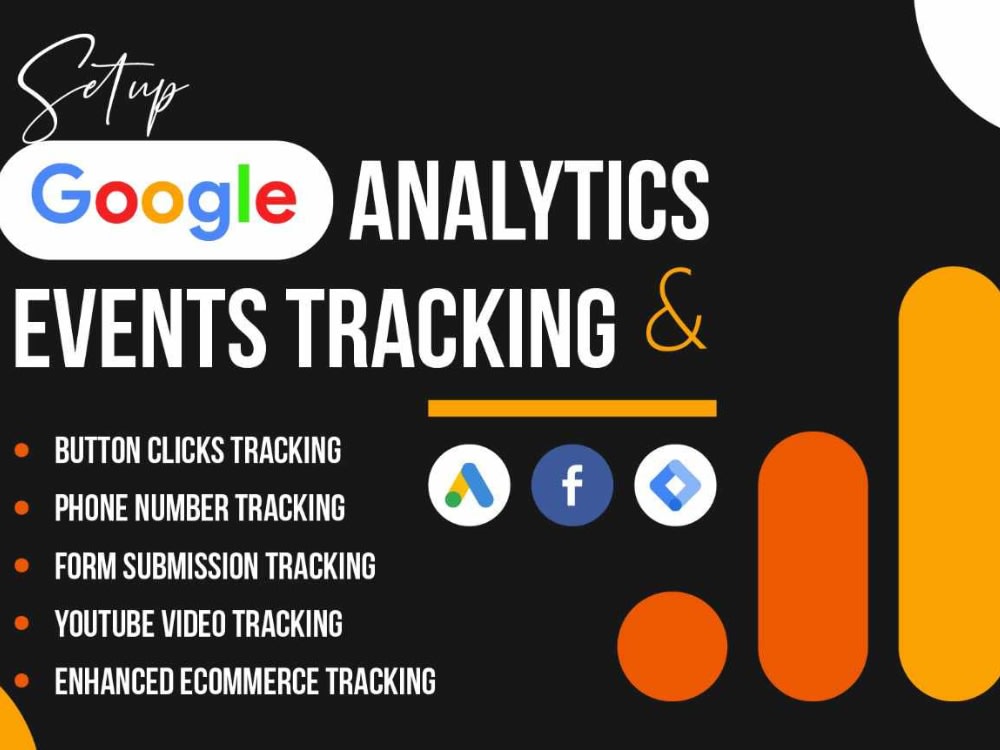Not known Incorrect Statements About Google Analytics Event Tracking
The Buzz on Google Analytics Event Tracking
Table of ContentsGet This Report on Google Analytics Event TrackingThe Google Analytics Event Tracking IdeasWhat Does Google Analytics Event Tracking Do?What Does Google Analytics Event Tracking Mean?The Only Guide for Google Analytics Event TrackingGoogle Analytics Event Tracking Fundamentals Explained

If you're mosting likely to set up event tracking manually, after that you're mosting likely to have to add some additional code to the aspects you wish to collect data from. The code you're going to function with will certainly look something like this: There are 4 elements within that code bit that you're mosting likely to require to specify yourself: event, Category, occasion, Activity, event, Label and event, Worth.
As you can see, 2 of these are needed (classification and action) while tag and value are optional. It all depends on the kind of information you desire passed on back to Google Analytics when an individual clicks on the defined element (Google Analytics Event Tracking). It will certainly be a lot simpler to define these components if you evaluate your internet site and decide which elements/actions you intend to track
6 Simple Techniques For Google Analytics Event Tracking
Currently, you'll be asked to define the and and you'll wish to pick from the drop-down menu that shows up when you click. This will certainly bring up the same event monitoring parts we looked at earlier, which you'll need to complete. Once you have actually defined these, you can relocate down to the second box and pick the trigger that will terminate your tag.
On the following screen, you'll additionally have a field for naming your trigger and, if you click package, you'll see a listing of the various triggers you can pick. In this case, we desire to select and then choose the alternative below. Then you'll establish the trigger to only terminate when an aspect is clicked with a link that contains the.
Every site talks. Prior to information analytics, we could not hear the voices of our websites. Just how do you know what your site is stating? Straightforward - Event tracking! Occasion monitoring gives you a photo of just how individuals involve with your website and service (Google Analytics Event Tracking). Do you need to know even more? Read on as we check out whatever you require to recognize, including what it is, why you need to track occasions, how to handle events information, and various other appropriate FAQs you might have.
The Google Analytics Event Tracking Ideas
You can change in between your occasion groups, actions, and labels in the Leading Events report. This record is critical for digging additionally into study on a specific occasion group. The Occasion Pages record shows the pages where occasions are caused. In this section, we can examine the leading web pages that drive events.
Occasions in Google Analytics have four major aspects. Google Analytics uses these codes to track user communications pop over to these guys and group them into occasion reports (Google Analytics Event Tracking).
Pick "Variables" > "Configure". A checklist of the specifications you can track on your internet site gets on the right. Under Clicks, Forms, and Videos, double-check each parameter. After examining all necessary areas, you can click "X" to close the home window and go back to the Summary menu on the left.
What Does Google Analytics Event Tracking Mean?
If you have not done so, you may require to set up a variable in the Google Analytics Setups box. After this, enter your GA monitoring ID in the Monitoring ID field.
Your ID will get on top of the screen. To do this, adhere to the following series of actions: After setting up the fields, pick the "Triggering" section. When configuring your brand-new trigger, click the "+" switch, then the "pencil" button, then choose your trigger type. Label your trigger and specify the conditions that bring about cause firing.
The Only Guide to Google Analytics Event Tracking
When it comes to knowing which sections and elements are assisting customers with your conversion funnel, you still won't understand. So, without occasion monitoring, GA reports will just count brows through as single-page sessions, also if individuals spend a great deal of time on one web page and engage with it significantly (and a bounce).
However how does occasion monitoring accomplish this?Single-page sessions called bounces start and wrap up visit the site on the very same page. Without occasion monitoring, GA will identify an individual's visit as a bounce if they do not browse to one more page, no matter just how they engage with it. A video-rich see this site page can have a higher bounce rate if occasions are not tracked.
Some Ideas on Google Analytics Event Tracking You Should Know
For GA to take event hits right into account when measuring bounce rates, you have to pick "Non-interaction event" as "False" during the GTM configuration. Establishing "occasion goals" with event action is an excellent method to monitor individual tasks you value extremely, such as brand-new lead entries or click a phone call to action.